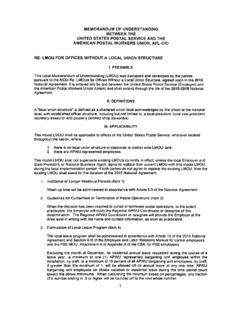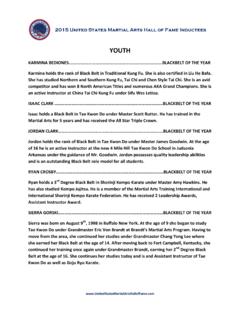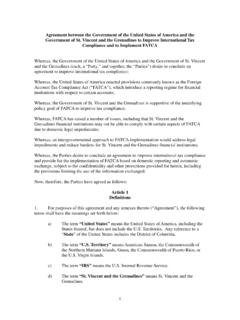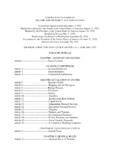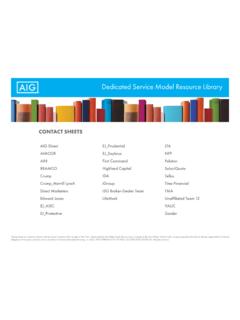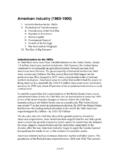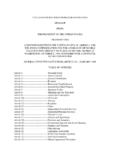Transcription of UNITED STATES - OECD.org
1 UNITED STATES Key findings Among the 34 OECD countries, the UNITED STATES performed below average in mathematics in 2012 and is ranked 27th (this is the best estimate, although the rank could be between 23 and 29 due to sampling and measurement error). Performance in reading and science are both close to the OECD average. The UNITED STATES ranks 17 in reading, (range of ranks: 14 to 20) and 20 in science (range of ranks: 17 to 25). There has been no significant change in these performances over time. Mathematics scores for the top-performer, Shanghai-China, indicate a performance that is the equivalent of over two years of formal schooling ahead of those observed in Massachusetts, itself a strong-performing state.
2 While the spends more per student than most countries, this does not translate into better performance. For example, the Slovak Republic, which spends around USD 53 000 per student, performs at the same level as the UNITED STATES , which spends over USD 115 000 per student. Just over one in four students do not reach the PISA baseline Level 2 of mathematics proficiency a higher-than-OECD average proportion and one that hasn t changed since 2003. At the opposite end of the proficiency scale, the has a below-average share of top performers.
3 Students in the UNITED STATES have particular weaknesses in performing mathematics tasks with higher cognitive demands, such as taking real-world situations, translating them into mathematical terms, and interpreting mathematical aspects in real-world problems. An alignment study between the Common Core State Standards for Mathematics and PISA suggests that a successful implementation of the Common Core Standards would yield significant performance gains also in PISA. Socio-economic background has a significant impact on student performance in the UNITED STATES , with some 15% of the variation in student performance explained by this, similar to the OECD average.
4 Although this impact has weakened over time, disadvantaged students show less engagement, drive, motivation and self-beliefs. Students in the are largely satisfied with their school and view teacher-student relations positively. But they do not report strong motivation towards learning mathematics: only 50% students agreed that they are interested in learning mathematics, slightly below the OECD average of 53%. UNITED STATES Country Note Results from PISA 2012 OECD 2 How does the UNITED STATES perform overall?
5 Among the 34 OECD countries, the UNITED STATES performed below average in 2012 in mathematics (rank 261), comparable with Hungary, Italy, Lithuania, Norway, Portugal, the Russian Federation, the Slovak Republic, Spain and Sweden. In reading, the UNITED STATES performed around the average (rank 172), comparable with Austria, the Czech Republic, Denmark, France, Hungary, Israel, Italy, Norway, Portugal, the UNITED Kingdom and Viet Nam. In science, the performance of the UNITED STATES was also close to the OECD average (rank 213) and comparable with that of Austria, Belgium, Croatia, Denmark, France, Hungary, Italy, Latvia, Lithuania, Luxembourg, Norway, Portugal and Spain.
6 The trend data show no significant changes in the average performance of 15-year-old students in the mathematics, reading and science over time. Just over one-quarter (26%) of 15-year-olds in the UNITED STATES do not reach the PISA baseline Level 2 of mathematics proficiency, at which level students begin to demonstrate the skills that will enable them to participate effectively and productively in life. This percentage is higher than the OECD average of 23% and has remained unchanged since 2003. By contrast, in Hong Kong-China, Korea, Shanghai-China and Singapore, 10% of students or fewer are poor performers in mathematics.
7 At the other end of the performance scale, the UNITED STATES also has a below-average share of top performers in mathematics. These students can develop and work with models for complex situations, and work strategically using broad, well-developed thinking and reasoning skills. Only 2% of students in the UNITED STATES reach the highest level (Level 6) of performance in mathematics, compared with an OECD average of 3% and 31% of students in Shanghai-China. The proportions of top performers in reading and science in the UNITED STATES are both around the OECD average.
8 What are the strengths and weaknesses of US students in mathematics? Relative to their overall performance in mathematics, students in the UNITED STATES are stronger in interpreting mathematical results than they are at formulating a real-world problem into mathematics. Also, they perform relatively better on tasks in the content area change and relationships ( algebra and the study of mathematical functions and relations) and less well in the content area space and shape (geometry-related content). Students in the UNITED STATES have particular strengths in cognitively less-demanding mathematical skills and abilities, such as extracting single values from diagrams or handling well-structured formulae.
9 They have particular weaknesses in items with higher cognitive demands, such as taking real-world situations, translating them into mathematical terms, and interpreting mathematical aspects in real-world problems. Analysis of the items on which UNITED STATES students performed relatively well indicates the following strengths and weaknesses in their mathematical competence: 11 Though rank 27 is the best estimate, due to sampling and measurement error the rank could be between 23 and 29.
10 2 Though rank 17 is the best estimate, due to sampling and measurement error the rank could be between 14 and 20. 3 Though rank 20 is the best estimate, due to sampling and measurement error the rank could be between 17 and 25. UNITED STATES Country Note Results from PISA 2012 OECD 3 Strengths Reading data directly from tables and diagrams requiring students only to understand a short text and read single values directly from a representation provided such as a table or a bar diagram Simple handling of data from tables and diagrams requiring students to understand a short text, read two values from a given representation.










